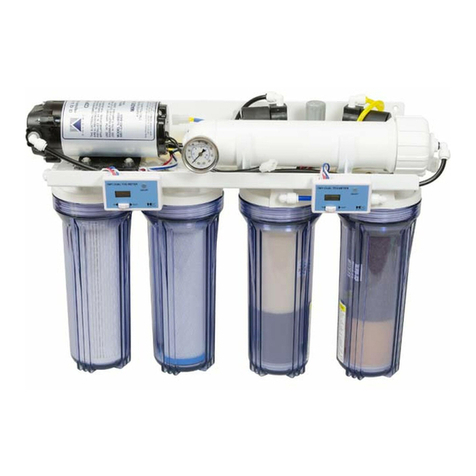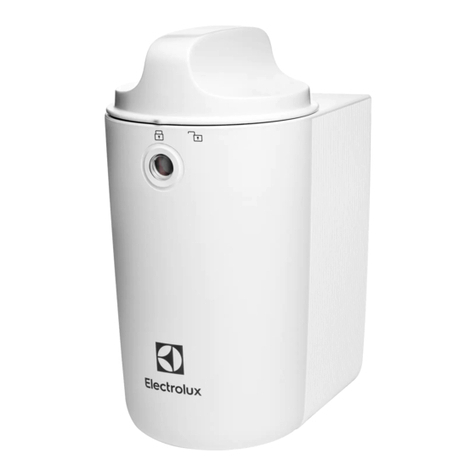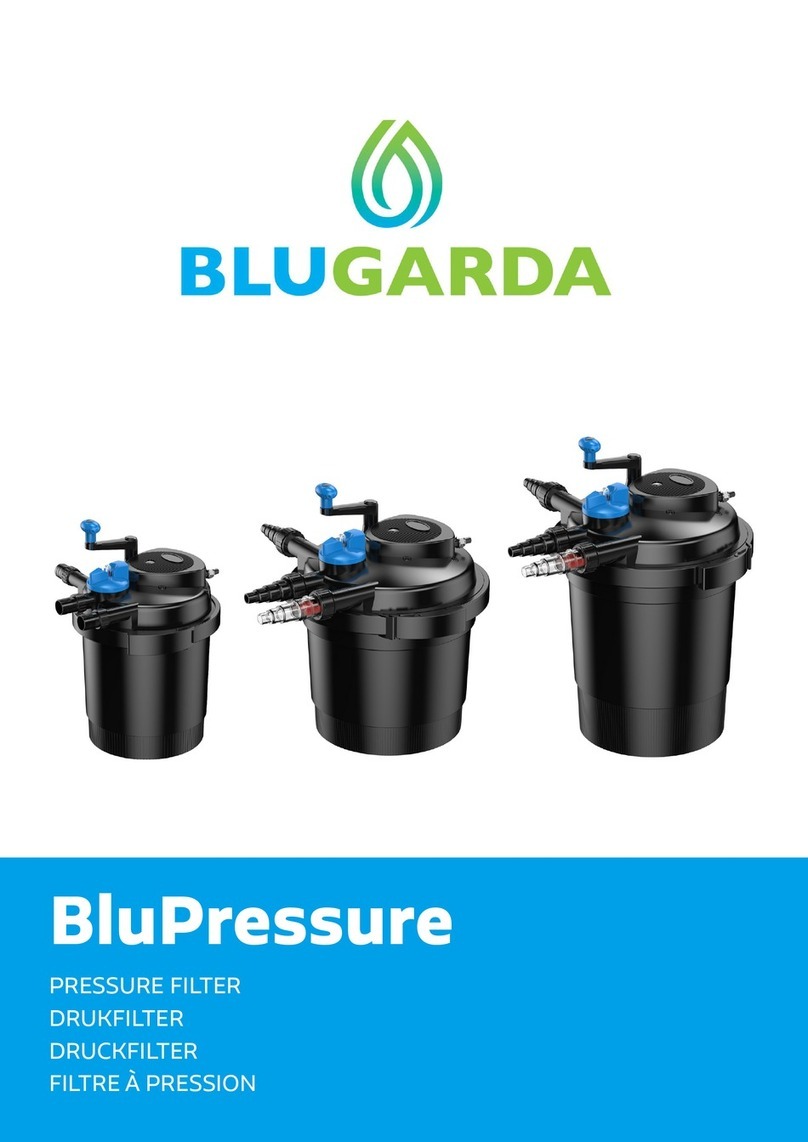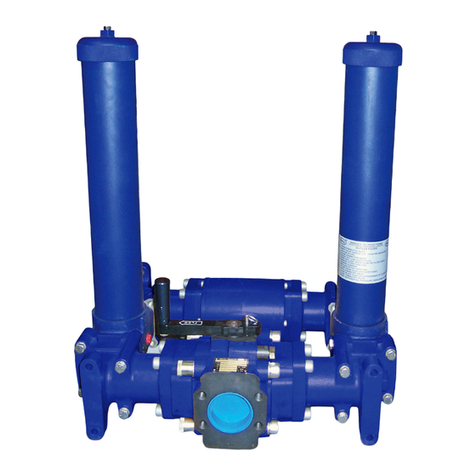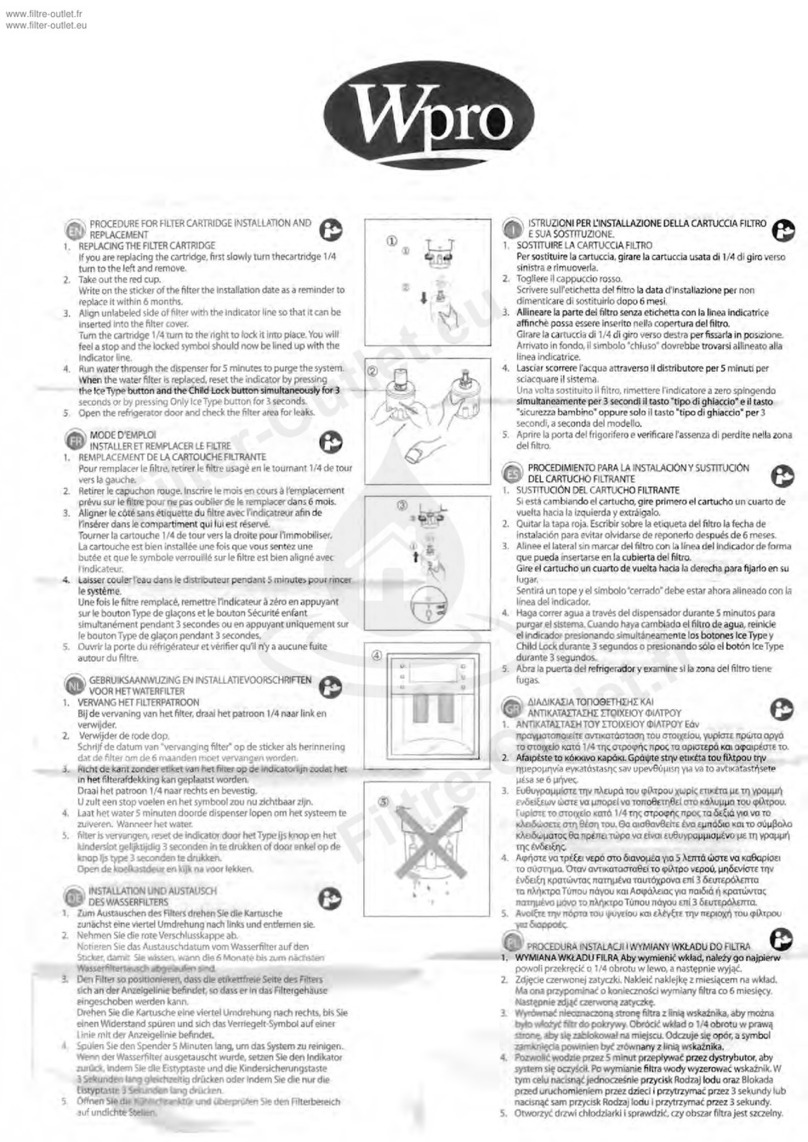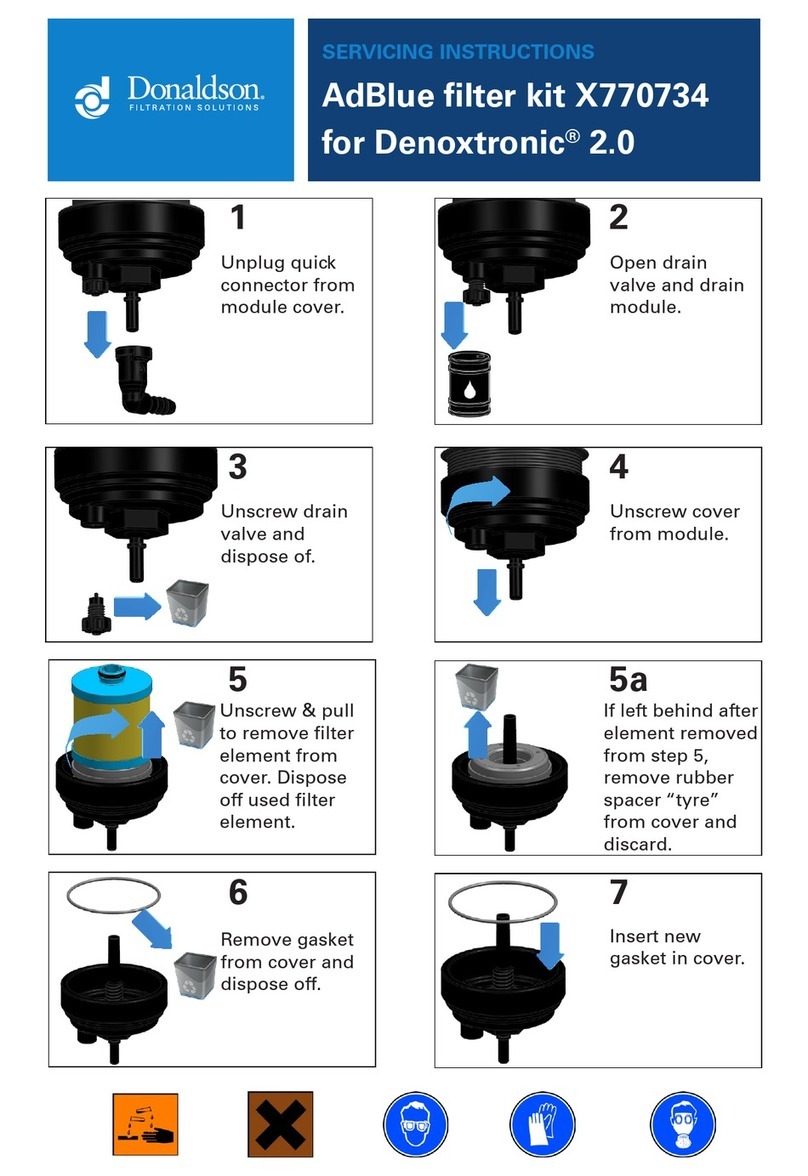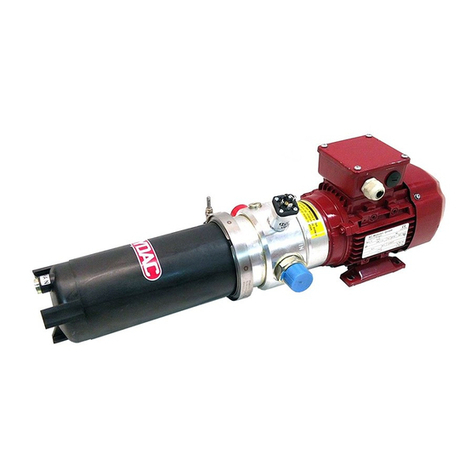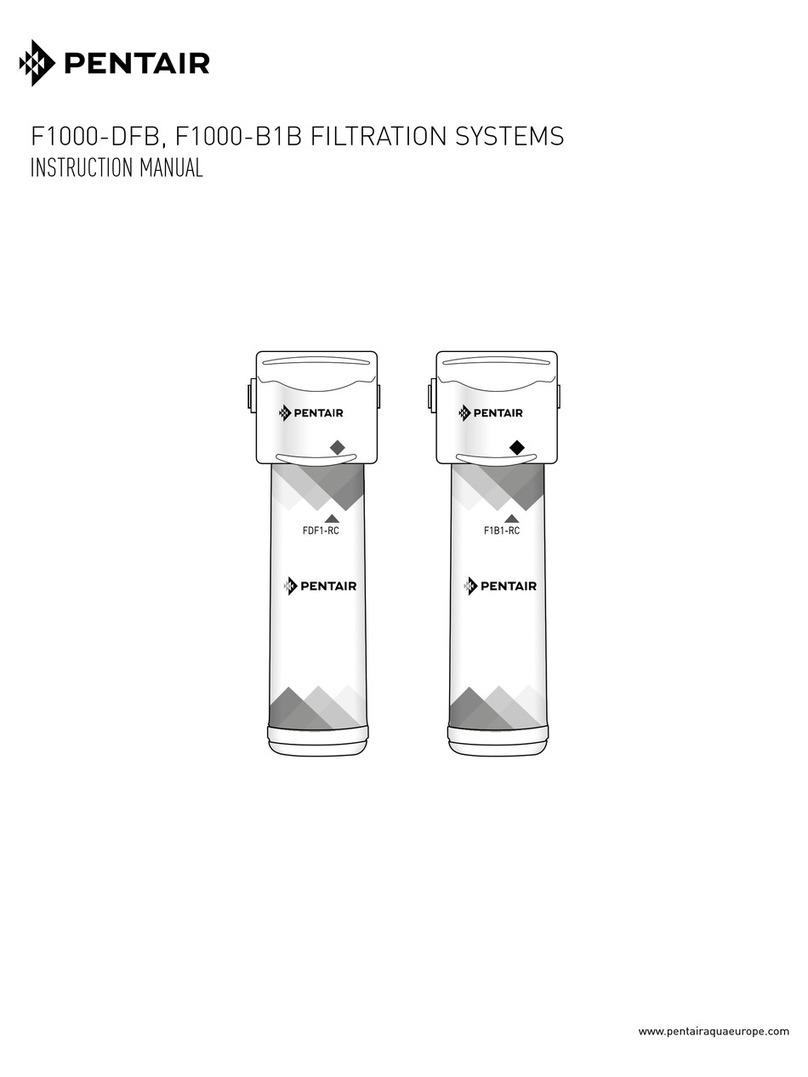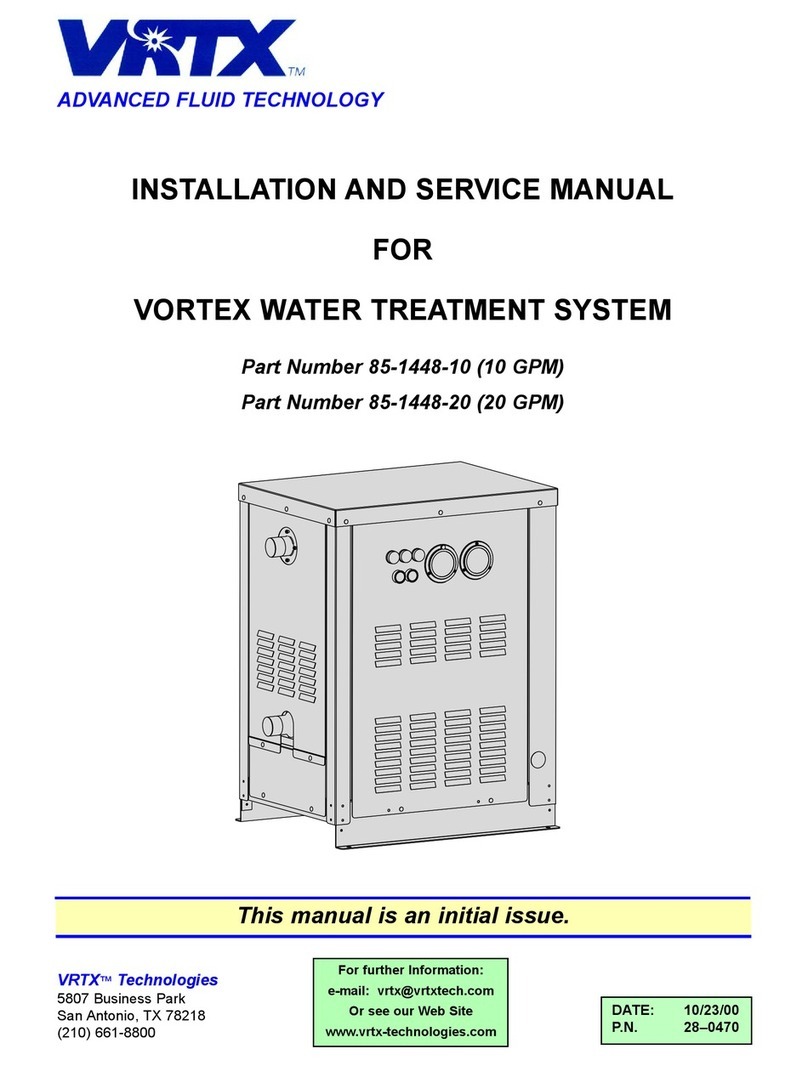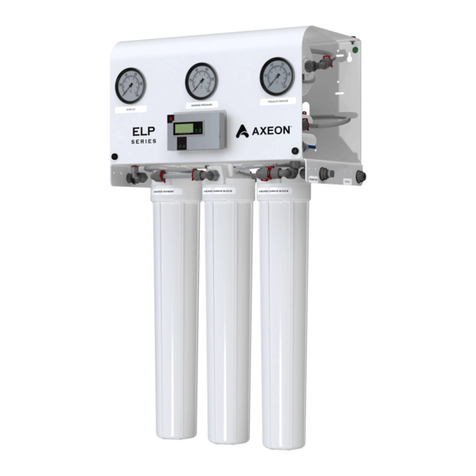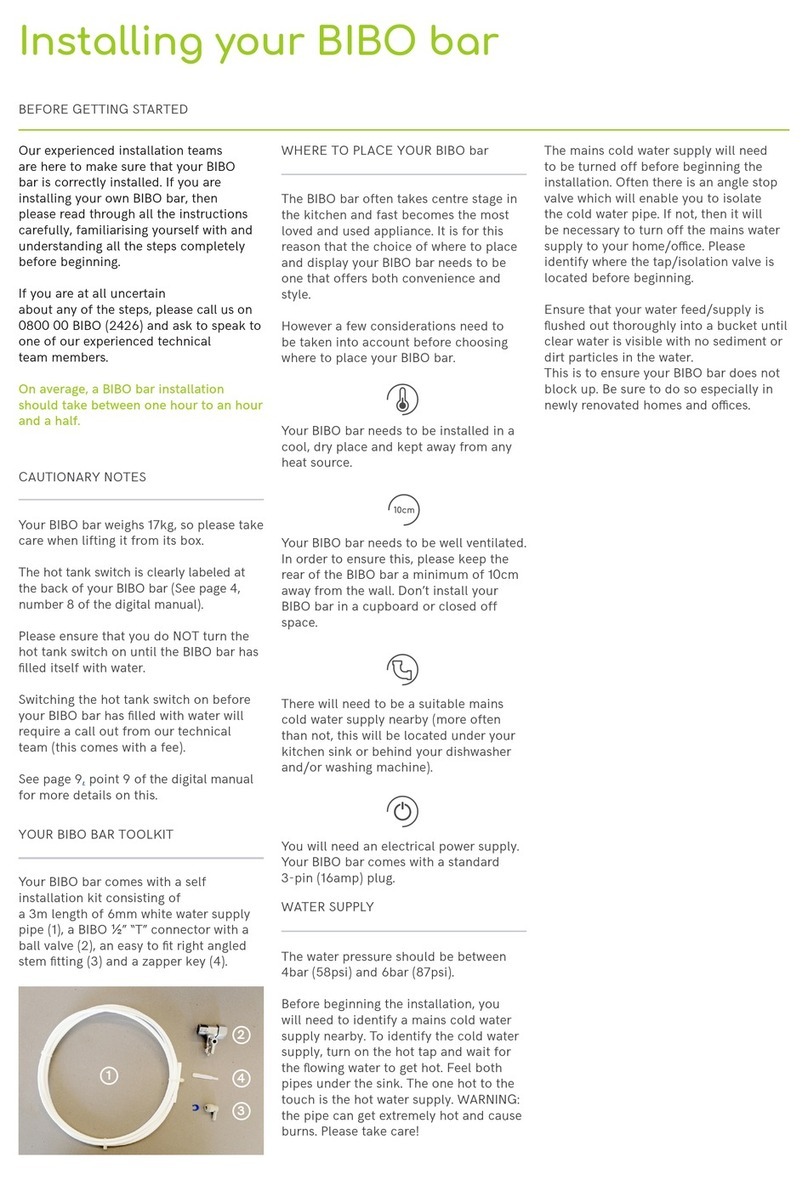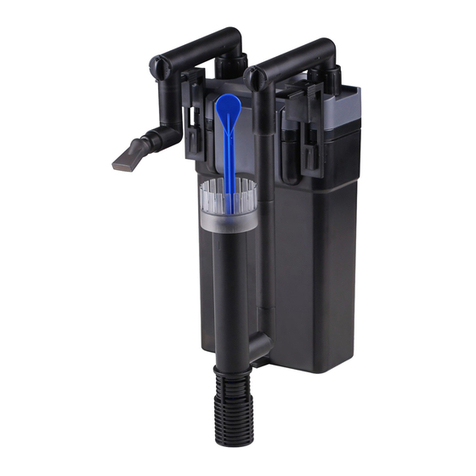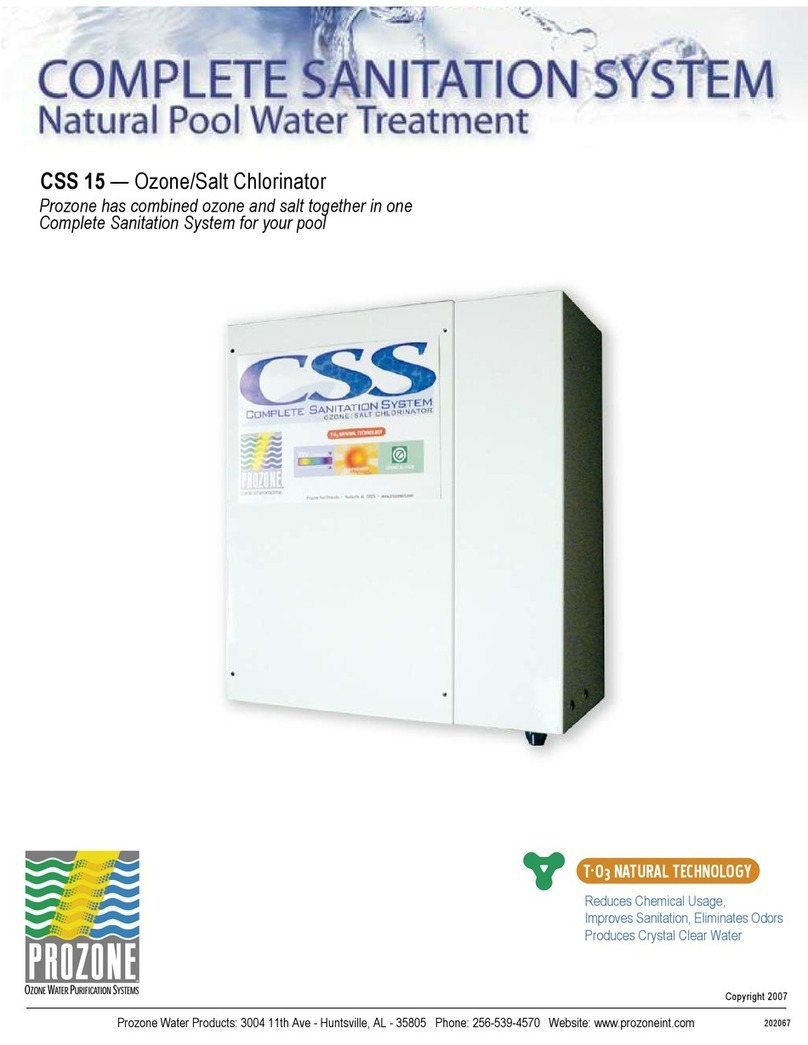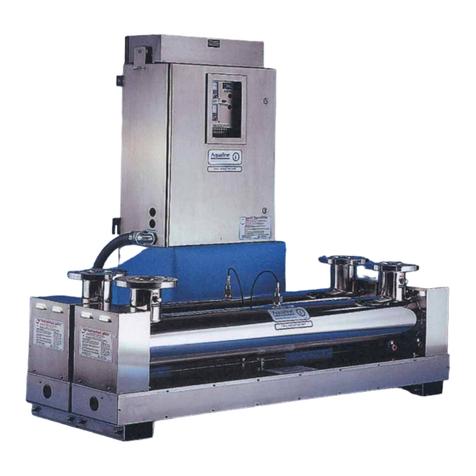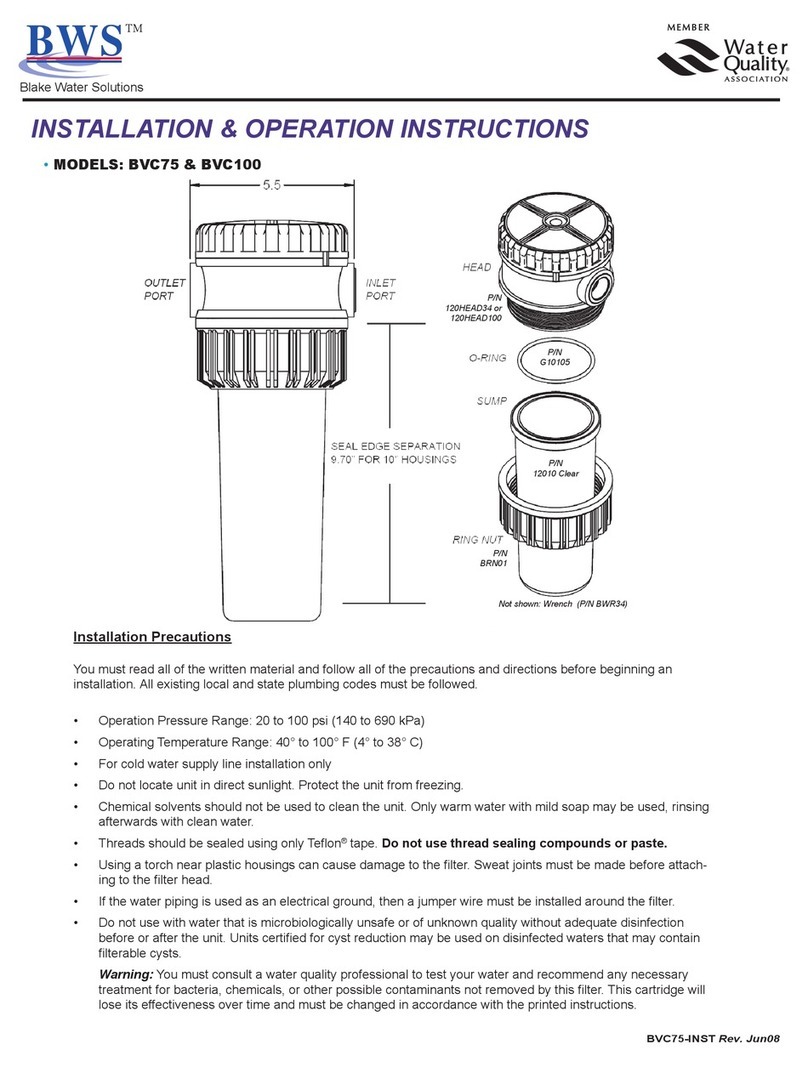RO System Manual OEM
I
a) The tank should be empty. Check the air precharge pressure with an accurate gauge
(low pressure type 0-12 Ibs.). The average tank pressure should be 6-8 psi (when the
tank is empty).
b) Fill the tank sanitizer feeder with the recommended disinfectant dosage, and connect
the feeder to the water supply and RO storage tank.
c) Turn on water supply and force water and disinfectant solution into the RO storage
tank. The storage tank should feel heavy when filled.
d) The disinfectant solution should remain in the tank a minimum of 10 minutes. If the
tank has not been sanitized in over a year, leave the solution in for 20 to 30 minutes.
Turn off the water supply valve and the RO storage tank valve. Disconnect the
sanitizer feeder, and connect the RO storage tank to the RO unit (the tank ball valve
should remain closed).
10)Open the feed water valve and open the RO faucet until water flow s freely from the
spout. Close the RO faucet. Hold the disinfectant solution in the RO system,
including the tubing and faucet, for a minimum of 10minutes. Open the tank ball
valve.
11)Shut off the feed water valve and open the RO faucet. Let water run out until the
flow stops at the RO faucet.
12)Open the feed water valve. Let water flow freely from the faucet for three minutes.
Shut off the water at the source water supply with RO faucet open.
13)When the flow of water has stopped at the RO faucet, remove the filter housing
sumps and membrane housing from the RO system. Replace the filters and
membraneaccordingto theservicelife. .
14)Replace the housings on the RO system. Open the source water valve and allow the
water to flow from the faucet.
.Because some of the disinfectant may still be in the system, the system should be
flushed prior to using the water human consumption.
.A maintenance record should be kept for the RO system, including information about
the replacement parts, when servicewas performed, and by whom.
PREVENTIVE MAINTENANCE
This recommendation is intended for maximum efficiency of RO water production by
your system.
1) Filter maintenance
a) It is OK to put filters on the shelf for several years.
b) To keep the sealed, non-opened filter, we recommended to put it into some air-tight
container, preventing it from absorbing the air. This prolongs the shelf life of carbon
filter (particularly, if you order the replacement filter more than one year usage) and
avoid any possible odor from the air.
2) Membrane maintenance
a) The dry packed membrane usually has a two-year shelflife. To prolong the shelflife,
we recommended to keeping non-opened dry membrane in refrigerator.
9












